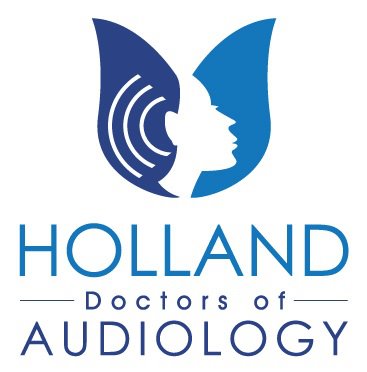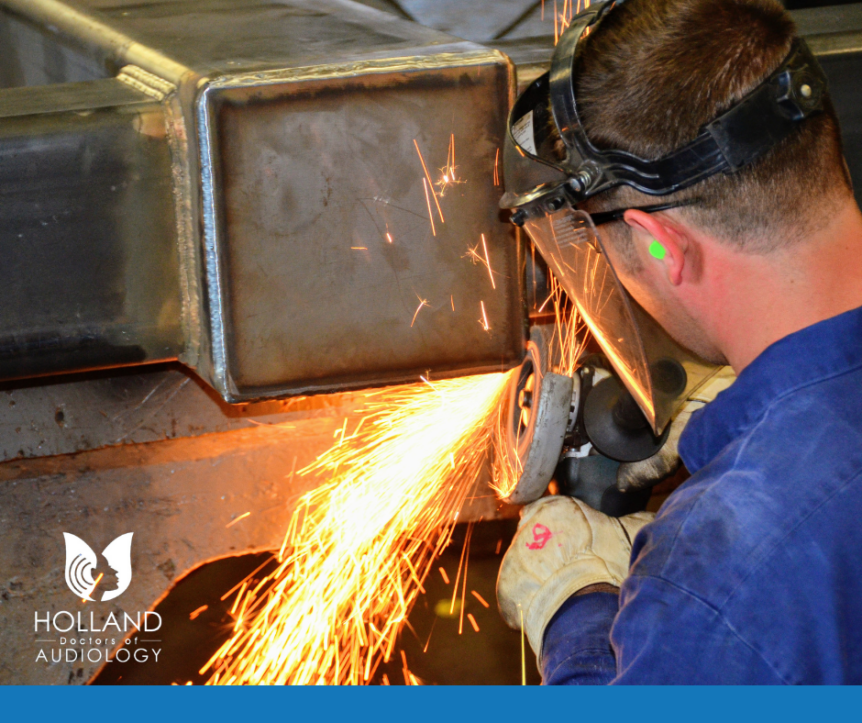On the job hearing loss and tinnitus are work related injuries that are not always obvious. While in some cases there is a clearly defined problem onset (e.g., head injury or acoustic trauma from an exposure to a sudden extremely loud sound) in most cases hearing loss develops over time, from prolonged exposure to hazardous noise levels.
Hearing loss can be classified as sensorineural (damage to the nerve), conductive (damage to the outer/middle ear system), or mixed (combination of both). Physical injuries (e.g., head trauma, injury to the ear, ruptured eardrum, blood in the middle ear, etc.) can result in conductive, mixed hearing loss, vestibular issues and even physical deformities. Injuries that cause vestibular damage lead to loss of equilibrium (e.g., balance problems, dizziness, vertigo, etc.)
In rare cases, injuries cause a Central Hearing Loss (usually from Traumatic Brain Injuries) where you can hear but not process/understand sounds due to the brain injury.
Tinnitus is another common workplace injury that results in workers compensation claims. Tinnitus, or ringing in the ears, is a phantom sound that can also occur with hearing injuries in a permanent and persistent way that can negatively impact those affected.
Injuries from hazardous sound levels typically cause a sensorineural hearing loss (aka “hearing nerve damage”) commonly in high frequencies.
It is important to note that hearing loss does not have to be profound or permanent to be considered a significant injury.
In other words, compensation claims can be filed if a worker suffers an injury that results either in a temporary decline or a permanent decline that is not complete ‘deafness’ (i.e., the worker can still hear, but not as well as before.)
Those who suffer work-related hearing injuries often are unsure as to what the next step should be. It’s not uncommon to try to self-diagnose with online tests or look for free hearing screenings. Unfortunately, those tests are not adequate to fully assess a work related hearing problem and are considered unreliable when scrutinized.
Workers who believe that they developed a hearing problem should not wait and should report the issue to their employer as soon as possible.
The employer will, typically, have them fill out forms outlining the details of the injury and will submit the forms to their insurance and, if applicable, to OSHA or their State safety organization. Information required for the claim typically includes the “when/where/how” of the incident, details as to the extent of the injury and how the injury affects the worker. Medical and Audiologic reports are also commonly included.
Workers who experience hearing problems (loss of hearing and/or ringing in the ears) will need to be tested to determine exact hearing levels and rule out other pathology leading to the symptoms. If there are medical concerns, an Ear Nose and Throat (ENT) or other physician may also need to evaluate the patient. If the worker had to go to the Emergency Room, or see a physician to treat the injury, those medical records should also be included with a claim.
To properly document hearing injuries, testing should be performed by a licensed Doctor of Audiology using calibrated diagnostic-level equipment in an ANSI compliant sound-proofed environment. Tests performed include audiometry and bone conduction for frequency specific hearing sensitivity measures, word recognition testing, speech in noise testing, otoacoustic emission testing, tympanometry and acoustic reflexes.
Work environments that have hazardous noise level are typically monitored and appropriate hearing protection is issued to the employees. OSHA (Occupational Safety and Health Administration) sets legal limits on noise exposure in the workplace.
The National Institute for Occupational Safety and Health (NIOSH) recommends that, to minimize the risk of hearing loss, worker exposure to noise should be at a level no greater than 85 dBA for eight hours.
Employers are responsible for their employees safety. Noise surveys should be taken to assess the risk for hearing injuries and the employees hearing protection and exposure time should be appropriate to the risk. For example, if a worker has to be exposed to 110dB(A) average sound levels, double hearing protection (earplugs and earmuffs) should be used and their time in that environment would need to be limited.
In most states compliance with federal and state laws requires hearing testing for employees at the start of their employment (to establish a baseline) and then annually to monitor changes. Changes in those results are recorded and reported to OSHA if they are significant (>10dB).
Work environments that exceed 90dB(A) average sound levels should also implement “noise controls” to protect workers who operate them. Noise controls include sound barriers, acoustic modifications to equipment, etc to lower the overall sound level.
If the injury occured in the workplace a worker’s compensation claim is filed. If another company or entity is responsible for the injury then the worker may be able to make a third-party personal injury claim, separate from any worker’s compensation claim. To support claims for decreases in hearing levels, having a baseline hearing test is crucial and test results from workplace testing can be requested by the employee.
If a workplace injury is the result of negligence or intentional behavior, there can be legal consequences for the employer and employees often pursue personal injury litigation in addition to workers compensation.
Examples include willful disregard of OSHA regulations, failure to provide hearing protection, failure to report significant hearing changes, etc.
Any hearing loss was caused by or aggravated by a workplace injury can be grounds for a workers compensation case. Injuries are not always limited to the workplace; a common reason for hearing injuries is motor vehicle accidents. If the employee is injured while driving a company vehicle, or on company business, those injuries may be eligible for workman’s compensation.
There are, however, exceptions where work injuries may not be covered by worker’s compensation. Examples include injuries sustained during the employees own time (e.g., lunch break), injuries because of misconduct/fooling around, injuries that are intentional and injuries that are a result of a willful violation of workplace rules.
In cases of serious injuries, those affected may be entitled to compensation for economic damages (medical bills, lost income, etc.) as well as for “pain and suffering.” Litigation will typically rely on medical records and expert testimony to show the claimant’s “pain and suffering” and Audiologists are often deposed or called to testify as expert witnesses. Personal injury attorneys typically handle those cases and, in our experience, most of these are resolved with out-of-court settlements.
In rare cases, there have been ‘whistleblower’ cases leading to class action lawsuits against employers and even earplug manufacturers.
While developing a robust and well documented workers compensation claim is important, workers should be aware of early signs of hearing issues.
Worse hearing after work that gradually gets better, having more ringing in the ears, asking others to repeat, are all signs of possible hearing problems.
Early intervention and appropriate hearing protection can prevent most cases of permanent occupational hearing problems. Workplace hearing screenings can miss hearing issues.
If you suspect or are concerned about hearing problems, a comprehensive evaluation by a Doctor of Audiology is an appropriate next step.

